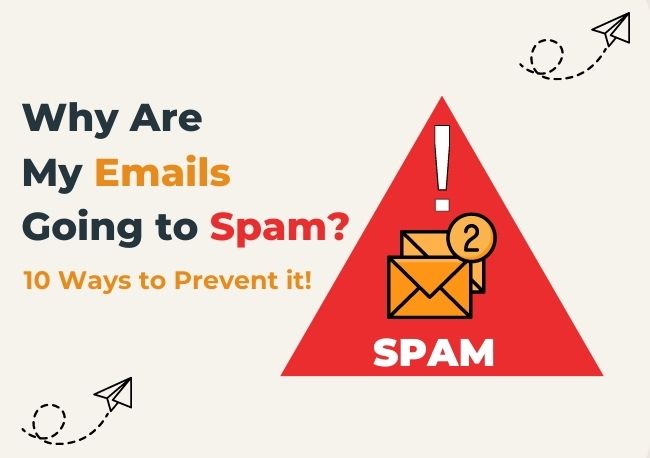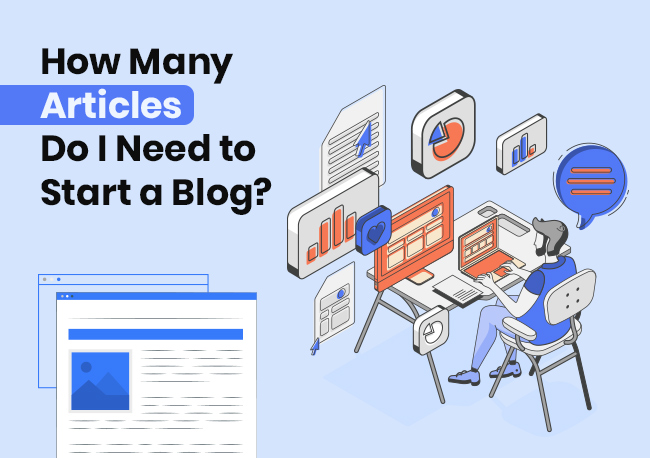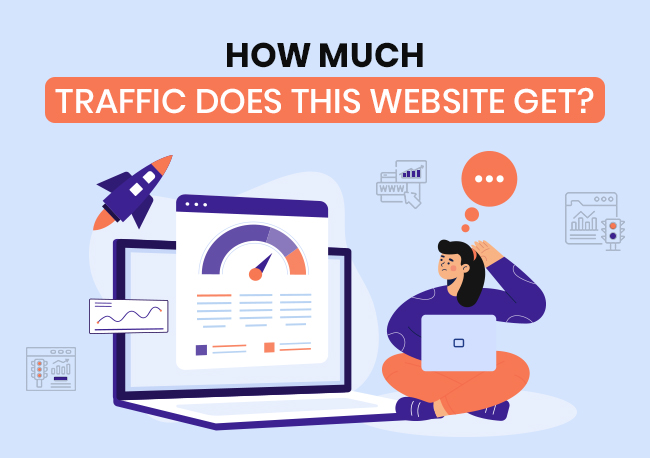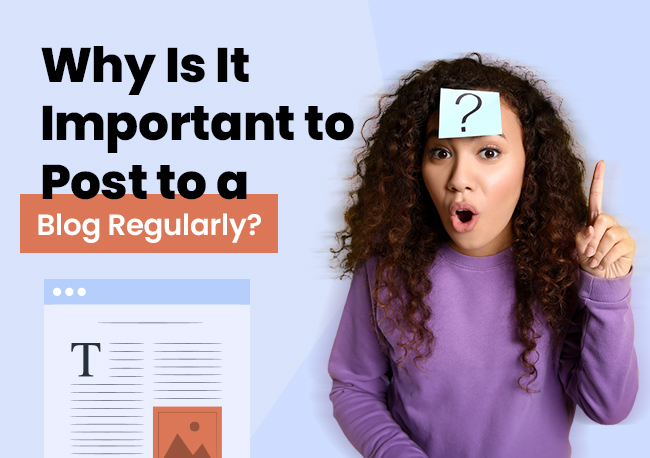Began as an experiment to see if two electronic devices could deliver a message; the concept of Email has certainly traveled a long journey. The first Email was sent back in 1971 by Ray Tomlison. Since then, numerous online methods have fostered communication between people around the world. However, Email remains a primary tool and a preferred choice among individuals for communication.
Today, around 306 billion emails are sent and received daily, but many emails end up in spam folders instead of inbox.
As an email marketer, you might be facing the issue of not being able to produce tangible results from your email marketing campaigns. Despite all the efforts and spending enough time drafting your content, your marketing emails lead to the spam folder.
Why does that happen? Well, the reason could be you are not following the best HTML practices or your subject lines are misleading.
Do you want to know how to stop your emails from going to spam? Below are some practices that will help you get your Email to appear in the recipient’s inbox.
Why Emails Go to Spam Instead of Inbox?
Your Marketing Emails are going to spam for the following reasons:
- Not Targeting the Right Audience
- Don’t Have the Permission of Email Subscribers
- Your IP Address is Flagged as Spam
- Recipients Have Marked You As Spam
- The Subject Line is Misleading
- Inaccurate Senders Information
- Using Spam Trigger Words
- Attaching Too Many Files
- Deceiving the Recipient
Also Read: Why Does Your Business Need a Domain Email Address?
1. Not Targeting the Right Audience

The very first reason your email goes to junk can be an unclear target audience. The most important variable in the success of your Email Marketing is choosing the right audience. But most marketers tend to make fundamental errors – targets too broad/narrow of an audience, not targeting the proper geo-location, overlooking users’ preferences & behavior, operating on assumptions rather than research, failing to adapt the current marketing scenarios, and more.
For instance, you are a sports shoe seller whose target audience surrounds gym enthusiasts and athletes. But if you don’t determine your customer base and target the entire shoe market, it won’t benefit you in any possible way. Above all, you won’t generate any sales, since the audience segmentation was not right.
Let’s say you are a salesperson who signed up to receive emails to learn about client conversion, but oftentimes you end up receiving non-preferred promotional emails. If your target audience doesn’t receive the preferred/right content, there are great chances of them unsubscribing to your emails.
If you target the wrong audience, your content will fall on deaf ears and be inaccurately marked as spam. This is why there’s no point in appealing to an audience who has no definite interest in your services. You need to understand who is your ideal audience, what they search for online, and how you can interact with them.
Also Read: What Are The Benefits Of A Website For Small Businesses
2. Don’t Have the Permission of Email Subscribers
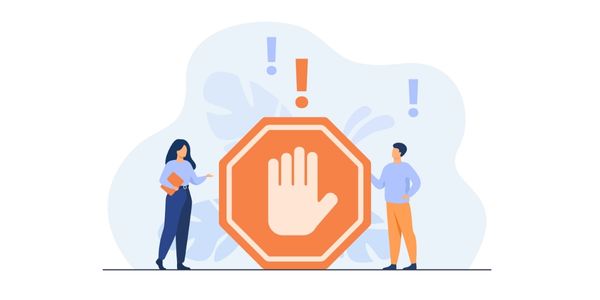
Have you ever heard about permission-based Email Marketing? Simply put, this type of marketing allows you to send an email to a recipient who has given the authorization to receive your message. But, if you don’t have permission, it will be sent straight to the spam box.
Before drafting the email, you must get the recipient’s permission. Otherwise, you can violate the CAN-SPAM Act of 2003.
To get permission from the subscribers, you will need to have an opt-in form on your site, making it clear to them that they are subscribing to your email list. Moreover, you must also include a comprehensive explanation of how a recipient can opt-out of receiving your emails in the future.
3. Your IP Address is Flagged as Spam
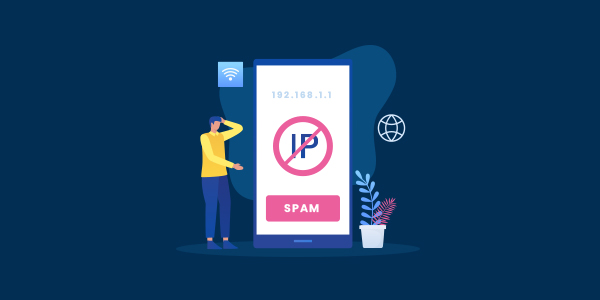
Even though you might not be sending spam or bulk emails, your IP address may be listed as spam. This is likely to happen when numerous established criteria trigger your IP Address.
For instance, if your email is suspected to be received from a suspicious IP Address in a specific time frame, email service providers like Google, Yahoo, Outlook, iCloud Mail, or ProtonMail will blacklist your IP address. Any email sent from the same address will bounce back as well.
Despite being a legitimate source, sending campaigns, services, or products: sending your email from a spammed IP address affects your deliverability. This could occur when you compromise on the web hosting services. For example, when multiple individuals operate from the same server, they are recognized as professional spammers or when there are high bounce rates.
Also Read: 5 Things Small Business Should Know About Web Hosting
4. Recipients Have Marked You As Spam

One of the most common reasons for recipients flagging you as spam is that they might have forgotten why they subscribed to your email list or think they made a mistake. Unfortunately, if several of your emails get spammed, it can cause your spam filters to label your email address as spam, diverting all of your emails to junk automatically.
5. The Subject Line is Misleading
Did you know? 47% of users open emails based on the subject line, while 69% of them report emails as spam based on the subject matter. Hence, these numbers make it evident that if your subject line doesn’t grab your users’ attention, the chances of them flagging your email as spam can increase.
This is why crafting short, creative, personalized, and descriptive subject lines showcasing an overview of the sent email is more than enough. Often, marketers take it a step too far by forming deceptive subject lines to trick their subscribers into opening their emails. But this process not only breaks the trust of your subscribers but also taints the image of your brand/company and also infringes the anti-spam laws.

Non-existent lottery prizes, false identity, a fake emergency, and implying a counterfeit personal relationship are some of the subject lines that can be deceptive.
Also Read: A Useful Guide To Building An Ecommerce Website From Scratch
6. Inaccurate Senders Information
Another obvious and standard reason for flagging your email as Spam is inaccurate sender’s information. Trust is one of the pillars of successful Email marketing, yet many marketers write inaccurate sender’s name & address, which in turn, causes suspicion among your subscribers, leading to unsubscription or even worse, flagging as spam.
For example, when you have your subdomain, you send an email or newsletter from the same. On the contrary, when you send an email credited from a false identity of renowned brands like Amazon or Netflix, subscribers start to suspect your email information, leading to them marking the email as spam. Further, you are legally liable to receive punishment as per the CAN-SPAM Act, 2003.
7. Using Spam Trigger Words
Here’s a list of some specific words that trigger a few spam filters in the subject line or the body of the content in the email.
- Amazing
- Cancel at any time
- Scams
- Schemes
- Promises
- Free gifts
- Gimmicks
- This is not spam
- Winner
- For only ($)
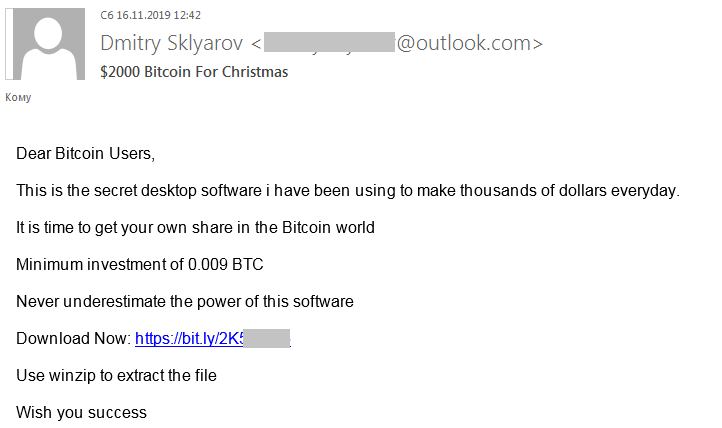
Do ensure that the above-given trigger words are just a few examples and they might not be red flags for your email service provider. You can also contact your service provider and make a list of trigger words that can cause your email to land in the spam folder.
8. Attaching Too Many Files
Using attachments is the most common practice when crafting an email. But including multiple files in bulk will trigger spam filters, as they might consider them harmful attachments, redirecting your email to spam. Moreover, attachments also increase the size of the email, making their turnaround time more than usual.
So, incorporating all the information in the body of the email is the best way to avoid diverting your email into spam. Though you wish to add additional information, we suggest you draft another email content rather than an attachment.
9. Deceiving the Recipient
The most common mistake that senders make all the time is attempting to increase email open rates by tricking their subscribers into clicking a sent message. This is where things start to turn south. Your subscriber might mark your email as spam, and there is a high chance of them unsubscribing to your email list.
Starting your subject line with “Fwd:” or “Re:” can imply that you previously communicated with the subscriber. This is one of the fastest ways to disappoint your subscriber and get your email content marked as spam.
How To Stop Your Emails From Going To Spam?
1. Go For a Reliable Service Provider
Choosing a reliable ESP (email service provider) that has an excellent market reputation and a positive track record is very important. Reliable ESPs helps you stay compliant and support authentic standards.
There are numerous email marketing softwares like Mailchimp, HubSpot, Mailjet, etc., that help in analyzing the data from your email and provide you with personalized recommendations for your content, targeting, and automation. Plus, they also help in keep your emails relevant and identify your email spam score. Hence, don’t compromise and make an informed decision.
2. Avoid Purchased Email List

If you are a business owner, you might wonder what causes emails to go to spam. The simple answer to this question is purchasing an email list. Many business owners tend to purchase an email list to get the word out about their newly launched products and services, which is where they go wrong.
When you purchase a list of email addresses from other sources or companies and send emails without getting recipients’ consent is known to be spamming. This can also harm the reputation of your company. Therefore, creating an organic list of subscribers is a smart choice.
3. Get Permission Before Sending Emails
We already have explained permission-based marketing. Now we will demonstrate permission guidelines for Email marketing.
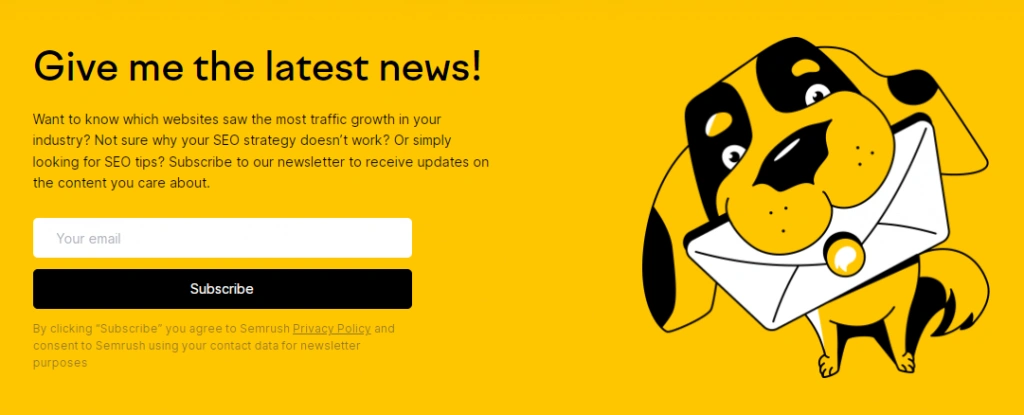
The first thing to do is get express permission. Express permission is when you have direct and transparent communication with the users about receiving your emails. When users sign up to your marketing channel, they become subscribers and receive emails from the same.
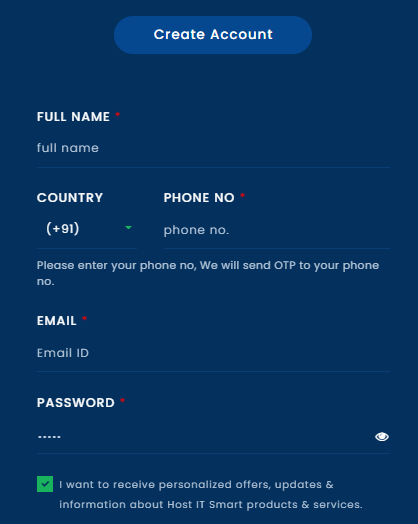
Implicit permission takes place when a user engages with your business via other means, like purchasing something or taking part in a giveaway. This is considered that a user is interested in receiving emails about their preferred campaigns.
Another way is to comply with the laws of your country and your subscribers. Generally, when you send emails to your subscribers residing in other countries, you are bound by your as well as the rules of their country.
Last but not least. Always provide an opt-out option to your subscribers. This allows them to easily opt out of your email subscription anytime they want.
Also Read: Website Optimization Tips To Increase Website Performance
4. Offer an Opt-out Option
Do you want to make sure you are reaching a quality audience? Then add an unsubscribe feature. Subscribers engaging with your content will continue reading your emails, and individuals who don’t will be able to unsubscribe when they want.
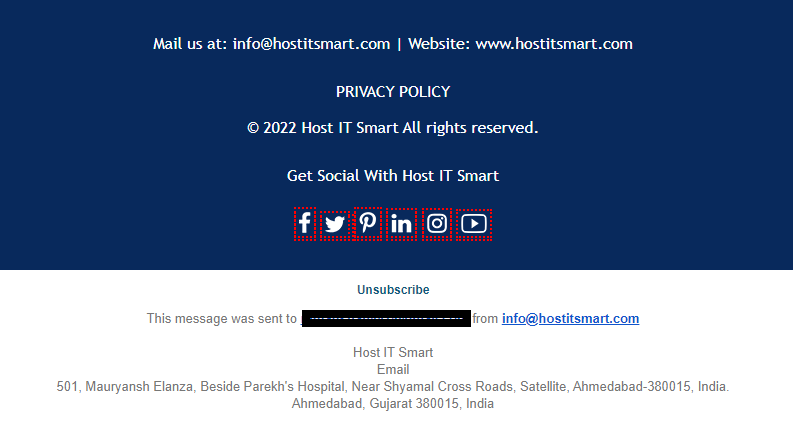
Moreover, take a look at the sending frequency. If you send too many emails, you will pester your subscribers, leading them to unsubscribe from your email channel.
5. Be Mindful of Spam Filters
Spam filters can come in several forms, so be attentive to minute details. Here’s a list of things you must consider before pressing send on the mail.
- Avoid all caps.
- Avoid using too many exclamation marks (!!).
- Avoid using the words – “free,” “bonus,” or “sale.”
- Avoid cliches like “Act now!” or “Call us today!”
- Limit using images in your emails.
- Use text alternatives for all your images.
These things might appear small, although applying them to your email content will help you pass through the spam filters.
6. Be Honest In Your Emails
Creating clickbait-style subject lines is a wonderful way to engage your subscribers, but fabricating misleading or unrelated lines will have them looking for an unsubscribe button. Another dishonest email tactic that should be avoided is interpreting as someone else. These practices are unethical and illegal, leading your brand or business into serious trouble and damaging your reputation.
7. Craft Compelling Subject Lines
Subject lines are the face of an email, so making them appealing is the finest way to promote your message. It would be great if you keep your subject line as short as possible because if a subscriber can’t read the full matter of the subject, it reduces the chance of them opening the email.
The best example of a great subject line

(Sender: Syed Balkhi – WPBeginner)
It is advised to craft personalized subject lines as they have higher opening and click-through rates.
8. Verify Your IP/Domain Reputation
Do you know the overall health of your domain is interpreted by mailbox providers? Engagement, spam-compliant rates, spam traps, and bounce rates are a few factors affecting the domain’s health. This is why having a good domain reputation is essential, as it measures the website’s trustworthiness and credibility.
Once the spam filter recognizes suspicious activity on your IP or domain, your emails will land in the spam box. Tools like MxToolBox, MultiRBL, and AntiAbuse will help you verify your domain name reputation.
Also Read: Nameserver: What Is It And What Does It Do?
9. Assess to Ensure That Your Email Is Not Spam
Before sending the emails, do have a quick run-through of spam from the email software. Spam check is a built-in feature in most email software that scans your message, determining the chances of it ending up in the spam folder.
Here’s a pro tip – One of the most suitable methods to verify that your emails are not getting snagged by spam filters is subscribing to your emails. Start by signing up, enabling a strict spam filter, and making a thorough observation. It is also useful to warm up email before sending out the campaign. Such a tool will help you mark your emails as important.
This inspection will give constant effectiveness to your email campaigns. Likewise, you can roll out a smooth strategy for your major campaigns. Conducting self-tests in short intervals is recommended, as it will give you an idea of where you must make relevant changes.
These were all the reasons why emails go to spam. Now, let us guide how you can ensure that emails don’t go to the Junk.
10. Staying Relevant
Focusing on the content of your email is what helps you stay relevant. During writing emails, one should know where to start & how to end an email. You need to figure out why you are sending the email and whether it is useful to your subscribers. If you have the answer to these questions, you are on the right track.
To make sure that your content is relevant, make an effort to interact with your subscribers. Sending a catchy email about your company, offers, discounts, promotional codes, and exclusive personalized offers will increase email open rates, leading to conversions.
To Sum Up,
We understand that handling email campaigns can be challenging. Try and follow the above pointers the next time you send marketing emails to your subscribers, and there are good enough chances that your email won’t draw close to the spam folder.
